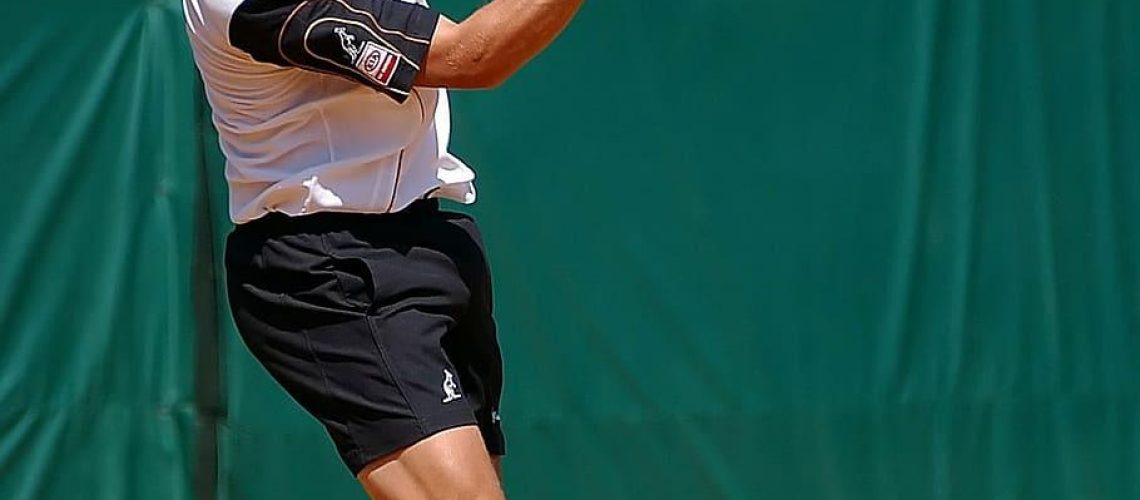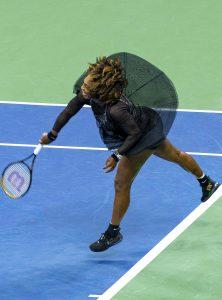We may earn money or products from the companies mentioned in this post.
Introduction to Tennis Court Sizes


When it comes to the game of tennis, one crucial aspect that often goes unnoticed is the size and dimensions of the tennis court These measurements play a significant role in determining the dynamics, strategy, and overall experience of the game In this article, we’ll delve into the history of tennis courts and explore why their size and dimensions are so important for players
A Brief History of Tennis Courts
Tennis has a rich history that dates back centuries It originated in Europe during the Middle Ages as a recreational activity played by nobility However, it wasn’t until the 19th century that modern tennis as we know it today began to take shape
The concept of rectangular courts started gaining prominence during this time Initially, there were no standard sizes, and different clubs had their own variations It wasn’t until 1875 when the All England Croquet Club (now known as Wimbledon) established a set of rules and standardized court dimensions
Since then, various organizations such as the International Tennis Federation (ITF) have further refined these measurements to ensure consistency across tournaments worldwide
The Importance of Size and Dimensions in the Game
Size matters in tennis courts, and it’s not just about fitting within a designated space The specific dimensions greatly impact how players strategize, move around the court, and utilize their skills
Court Length:
The length of a standard tennis court is 78 feet or 2377 meters This length allows players enough room to execute powerful serves while also providing ample distance for baseline rallies
Court Width:
The width varies depending on singles or doubles play For singles matches, the width is 27 feet or 823 meters, while for doubles matches, it expands to 36 feet or 1097 meters The wider doubles court encourages players to cover more ground and requires different strategic positioning
Net Height:
The net divides the court into two halves and plays a crucial role in gameplay It is positioned at a height of 3 feet or 0914 meters at the center and gradually slopes down towards the posts on either side This height allows players to execute shots over the net while still providing a challenge to clear during serves and volleys
Service Boxes:
These rectangular areas located on each side of the net are where players must serve from during their turn They are strategically positioned to ensure that servers have an equal opportunity to target different parts of the court, adding depth and variety to gameplay
In conclusion, understanding tennis court sizes is vital for both players and spectators alike These dimensions have evolved over time through trial and error, aiming to create fair playing conditions while also challenging athletes’ skills So, next time you watch a thrilling tennis match, take a moment to appreciate how these measurements contribute to the excitement on the court!
Standard Tennis Court Dimensions

Singles court dimensions
When it comes to singles tennis, the dimensions of the court play a crucial role in determining the flow and strategy of the game The length of a singles court is 78 feet, which might not seem like much until you step foot on it and realize just how much ground you have to cover On either side of the net, there is a width measurement of 27 feet, giving players enough space to showcase their skills and agility
To get a clearer picture of the size of a singles court, let’s calculate its square footage By multiplying the length (78 feet) by the width (27 feet), we arrive at a total area of 2,106 square feet That’s quite an expanse for players to navigate during intense rallies and lightning-fast serves!
Doubles court dimensions
Doubles tennis brings an added level of excitement as two players team up against another pair in fierce competition To accommodate this dynamic gameplay, doubles courts have slightly different dimensions compared to singles courts
The length measurement remains unchanged at 78 feet for doubles courts However, when it comes to width, things change significantly Doubles courts are wider than singles courts, with a measurement of 36 feet on each side of the net
Just like with singles courts, let’s calculate the square footage for doubles courts By multiplying the length (78 feet) by the increased width (36 feet), we find that doubles courts boast an impressive total area of 2,808 square feet – providing ample room for strategic teamwork and powerful shots
Factors Influencing Tennis Court Size Variations


When it comes to tennis court sizes, there are several factors that influence the dimensions and square footage One of the primary considerations is the playing surface material used Different materials, such as clay, grass, and hard courts (asphalt or concrete), have their own traditional sizes and square footage requirements
Playing Surface Materials
-
Clay Courts:
Traditionally, clay courts have specific sizes and square footage that differ from other types of tennis courts The dimensions of a clay court can vary depending on whether it’s a singles or doubles court Clay courts offer unique playing characteristics due to their slower pace and high bounce -
Grass Courts:
Grass courts also have their own traditional sizes and square footage requirements Compared to other types of tennis courts, grass courts provide a faster-paced game with lower bounces The dimensions of grass courts may vary based on whether it’s a Wimbledon-style court or other variations -
Hard Courts (Asphalt or Concrete):
Hard courts are another popular choice for tennis surfaces, especially in professional settings They have specific traditional sizes and square footage requirements distinct from other types of tennis courts Hard courts offer a medium-paced game with consistent bounce
Recreational versus Professional Settings
The size variations for tennis courts can also depend on whether they are intended for recreational use or professional tournaments
-
Size Variations for Recreational Use:
In recreational settings, there may be some flexibility in the dimensions of tennis courts based on available space and preferences However, there are still general guidelines to ensure a fair game -
Size Variations for Professional Use:
Professional tennis courts adhere to strict standards set by governing bodies like the International Tennis Federation (ITF). These standards define the dimensions, square footage, and other specifications to ensure consistency across professional tournaments worldwide
Frequently Asked Questions About Tennis Court Sizes


How much space is needed around the perimeter?
-
Space Requirements for Fencing, Lighting, and Seating Areas:
To create a safe and functional tennis court facility, it’s important to consider additional space for fencing, lighting fixtures, and seating areas These requirements may vary based on local regulations and personal preferences -
Safety Considerations for Players:
It’s crucial to provide sufficient space around the perimeter of a tennis court to ensure player safety This includes maintaining adequate clearance between the court boundaries and any obstructions or hazards
Do mini-tennis or children’s courts have different dimensions?
-
Official Guidelines for Mini-Tennis Court Sizes:
Mini-tennis courts or children’s courts often have different dimensions compared to full-size tennis courts Governing bodies like the ITF provide official guidelines for mini-tennis court sizes that are suitable for young players learning the sport -
Options for Temporary or Adjustable Boundaries:
In some cases, mini-tennis or children’s courts may feature temporary or adjustable boundaries to accommodate different skill levels or age groups
What are the dimension requirements for wheelchair tennis?
-
Official Guidelines for Wheelchair Tennis Court Sizes:
Wheelchair tennis has specific dimension requirements outlined by organizations like the IT These guidelines ensure that wheelchair players have sufficient space to maneuver and compete comfortably -
Additional Considerations such as Net Height and Accessibility:
Along with court dimensions, wheelchair tennis also considers factors like net height adjustments and accessibility to cater to the unique needs of wheelchair athletes
How do I convert square feet to square meters or vice versa?
-
Conversion Methods Using Simple Calculations:
To convert between square feet and square meters, you can use simple mathematical calculations There are formulas available online that make this conversion quick and easy -
Useful Tools and Resources for Accurate Conversions:
Various online converters or mobile applications can help ensure accurate conversions between square feet and square meters based on your specific needs
Useful Links


Tennis Court Dimensions – The Resource Nexus
Tennis Court Dimensions – How Big Is A …
Tennis Court Dimensions: How Big is a …
Tennis Court Dimensions & Diagram: How Big is it?
What’s the square footage of a tennis court? – Alexa Answers
Is A Tennis Court A Square Or A Rectangle
How Many Padel Courts Can Fit On A Tennis Court?
Tennis Court Dimensions
The area of a tennis court is 2808 ft^2, or 8 square feet …
Tennis Court Size And Dimensions
Padel Court Dimensions Guide
Tennis court dimensions | Types of tennis court
A regulation doubles tennis court has an area of 2808 square …
Tennis Court Dimensions In Feet & Some Measurement Tips
06/2023 Guide To Dimensions Of A Tennis Court
2808 Square Feet, For A Tennis Court Crossword Clue
Tennis Court Dimensions & Layout – Need to Know
Tennis Court Dimensions & Layout 2023 – How Big Is A …
How Many Square Feet Is A Tennis Court
How Much Does a Tennis Court Cost?
A Brief Overview of Tennis Balls

Tennis balls, those little fuzzy yellow objects that bounce across the court, have a rich history and play a crucial role in the sport of tennis These small spheres are carefully designed and manufactured to meet specific requirements, ensuring optimal performance on the tennis court
1 History
The origins of tennis balls can be traced back to the 19th century when they were made from materials like leather stuffed with hair or wool However, it wasn’t until the early 20th century that the modern design we know today emerged The transition from fabric-covered balls to rubberized ones revolutionized the game, providing better durability and consistency
2 Importance in the Sport of Tennis
Tennis balls are an essential component of any match or practice session Their unique characteristics, such as their weight, size, and surface texture, significantly impact gameplay The way a tennis ball bounces off the ground affects player strategies and shot execution As players rely on these little orbs for every serve, rally, and volley, understanding their composition and manufacturing process becomes vital
Purpose of This Blog

This blog aims to shed light on two aspects related to tennis balls: understanding their manufacturing process and answering common questions surrounding them By exploring how these spherical wonders are made and addressing frequently asked questions about their features and usage, you’ll gain valuable insights into this critical element of tennis
1 Understanding the Manufacturing Process
The journey from raw materials to a perfectly pressurized tennis ball involves several intricate steps We’ll dive into each stage of production – from molding rubber cores to attaching felt covers – uncovering the secrets behind crafting these iconic sporting accessories
2 Answering Common Questions
Have you ever wondered why tennis balls are yellow? How long do they last? What’s the purpose of the felt covering? This blog will address these and many other frequently asked questions related to tennis balls By the end, you’ll have a deeper understanding of these fascinating objects that make every game of tennis possible
Raw materials and components

When it comes to crafting high-quality products, the choice of raw materials and components plays a vital role In the manufacturing of rubber balls, several key elements come together to create a durable and reliable end product
Rubber core
The rubber core forms the heart of any rubber ball Manufacturers have two options: natural rubber or synthetic rubber Natural rubber, derived from latex sap produced by certain trees, offers excellent elasticity and bounce On the other hand, synthetic rubber is artificially created using various chemical compounds Each type has its own unique properties and advantages, depending on the specific requirements of the ball
1 Natural rubber vs synthetic rubber:
Natural rubber boasts superior resilience and elasticity, making it ideal for sports balls that require optimal bounce performance Synthetic rubbers, however, offer enhanced durability and resistance to wear and tear over time
2 Chemical additives for specific properties:
To further enhance the desired characteristics of the rubber core, manufacturers often incorporate chemical additives during production These additives can impart qualities such as increased grip or improved visibility in low-light conditions
Felt covering
The felt covering is an integral part of many types of balls – providing a soft outer layer for comfortable handling while also adding crucial features like grip and durability
1Types of felt: wool, nylon, and polyester blends:
Felt coverings are commonly made from wool or synthetic fibers such as nylon or polyester blends Wool offers excellent grip but may wear down faster compared to synthetic options which tend to be more durable
2Colors and visibility factors:
The color selection of the felt covering is not just about aesthetics It also plays a role in enhancing visibility during gameplay, especially in sports like tennis or cricket where quick reactions are crucial Brightly colored felt can make tracking the ball easier for players and spectators alike
Glue and other adhesives
While often overlooked, glue and other adhesives are essential components that hold everything together in a rubber ball’s construction
1Specific types used in manufacturing:
In the manufacturing process, specific types of adhesive are carefully chosen to ensure optimal bonding between different materials Each adhesive has its unique properties, such as flexibility or high tensile strength, which contribute to the overall durability of the ball
2Role in overall durability:
The quality of adhesives used directly impacts the longevity and reliability of the final product Proper adhesion ensures that all components stay securely attached even under intense use or harsh conditions
Manufacturing Process

When it comes to the manufacturing process, there are several crucial steps that ensure the production of high-quality products From the preparation of raw materials to the final packaging and shipping, each stage plays a vital role in creating a durable and reliable end result
Preparation of Raw Materials
In this initial phase, the raw materials are carefully prepared for further processing It begins with blending rubber with additives to create a compound that possesses the desired characteristics This compound acts as the foundation for the manufacturing process
Simultaneously, felt is cut into appropriate shapes and sizes This step ensures that the felt will fit perfectly onto the core and provide optimal performance
Molding the Core
Once the raw materials are ready, it’s time to mold the core of the product Heating and compression techniques are employed to shape and form half-shells from the rubber compound These half-shells will eventually come together to create a solid core
Bonding the Core Pieces Together
Now that we have our molded core, it’s time to bond all the pieces together The first step involves applying adhesive on one side of each half-shell Then, under heat and pressure, these half-shells are fused together seamlessly, forming a cohesive unit
Attaching the Felt Covering
The next step in this intricate manufacturing process is attaching the felt covering onto our bonded core To achieve this, felt pieces are carefully bound together using adhesive Once these pieces are secured, they are pressed onto our bonded core with precision
Quality Control & Testing
To ensure that only top-notch products reach customers’ hands, a rigorous quality control and testing phase is implemented One such test is the bounce test, which assesses the rebound capability of the product Additionally, a compression test is performed to evaluate the product’s ability to withstand pressure and retain its shape
Packaging and Shipping
After passing all quality tests, the final products are carefully packaged to protect them during transportation Each item is meticulously prepared for shipping, ensuring that it reaches its destination in perfect condition
So there you have it – an overview of the manufacturing process involved in creating reliable and durable products From preparing raw materials to conducting quality control tests, each step plays a pivotal role in delivering high-quality items that meet customers’ expectations
Variations among tennis balls

Tennis balls may all look the same at first glance, but there are actually several key variations that can greatly impact their performance on the court From differences in construction to the impact of pressurization and even the choice of felt coverings, understanding these variations can help players make informed decisions about which ball is best suited for their game
Professional vs recreational balls
Professional tennis balls are meticulously crafted to meet the high demands of competitive play They typically feature a higher quality construction, with a durable outer layer made from premium materials This ensures better consistency and durability throughout extended matches On the other hand, recreational balls are designed for casual play and often have a lower quality construction that may not withstand intensive use
When it comes to performance characteristics, professional balls offer greater control and spin due to their tighter felt covering They also provide more consistent bounce, allowing players to anticipate and adjust their shots accordingly Recreational balls, while still suitable for casual play, may not offer the same level of precision or responsiveness
Pressurized vs non-pressurized balls
Another important distinction among tennis balls is whether they are pressurized or non-pressurized Pressurized balls have an internal air pressure that enhances their bounce and liveliness on the court The pressurization process involves injecting compressed gas into the ball’s core, creating a spring-like effect when struck
In contrast, non-pressurized or “pressureless” balls do not contain any internal air pressure Instead, they rely on solid rubber cores that provide a more consistent bounce over time without losing their liveliness as quickly as pressurized balls do
The choice between pressurized and non-pressurized balls depends on personal preference and playing style Pressurized balls offer a more dynamic play experience, with greater speed and bounce, but they tend to lose their pressure and performance characteristics over time Non-pressurized balls, while less lively, maintain their consistency for longer periods
Different court surfaces
Tennis is played on various court surfaces such as clay, grass, and hard courts The type of surface can greatly influence the optimal choice of tennis ball
Clay courts require tennis balls with a softer felt covering that allows them to grip the surface better This ensures optimal spin and control during play Grass courts, on the other hand, demand tennis balls with a harder felt covering to withstand the fast-paced nature of the game on this slippery surface
Hard courts are typically made from materials like concrete or asphalt and have medium-paced gameplay Tennis balls used on hard courts need a balance between grip and durability They often feature a medium-density felt covering that provides enough traction without wearing out too quickly
In conclusion, understanding the variations among tennis balls is essential for players looking to enhance their game Whether it’s choosing between professional or recreational balls, pressurized or non-pressurized ones, or selecting the right ball for different court surfaces – every decision can impact a player’s overall performance on the court
Conclusion

In conclusion, understanding how tennis balls are made is crucial for both tennis enthusiasts and consumers alike By summarizing the manufacturing process and highlighting the importance of this knowledge, individuals can gain a deeper appreciation for the product’s quality and make more informed purchasing decisions
Summary of the manufacturing process
The manufacturing process of tennis balls involves several intricate steps that ensure the final product meets the standards of durability, bounce, and feel From molding the rubber core to applying layers of felt fabric and pressurizing the ball, each stage contributes to its overall performance on the court
Importance of understanding how tennis balls are made
Appreciating the product’s quality:
By understanding how tennis balls are made, players can better appreciate the craftsmanship and attention to detail that goes into creating these essential sporting goods Knowing about factors such as core construction or felt material composition enables players to recognize superior-quality balls that enhance their game experience
Making informed purchasing decisions:
With knowledge about the manufacturing process, consumers can make more informed purchasing decisions They can assess different brands or models based on their production methods and materials used Understanding how certain features affect a ball’s performance allows individuals to select products that align with their specific playing style or court conditions
Useful Links

The history of tennis balls
How to Start Manufacturing Business of Tennis & Padel Balls
The Chemistry of a Tennis Ball
New Balls, Please
Why Are Tennis Balls Fuzzy – What Is a Tennis Ball Made Of
How to Make a Tennis Ball
How a tennis ball is made | automatic ball manufacturing
The History of Tennis Balls
What Are Tennis Balls Made Out Of?
Are Tennis Ball Felt Made Out Of
History of the Tennis Ball
How a tennis ball is made
How tennis balls are made #tennis #howitsmade … – TikTok
How to Make a Tennis Ball – Vimeo
Watch the 11-Step Process to Manufacture Penn Tennis Balls
What Are Tennis Balls Made of? – Material, Size & Weight
Who Created Tennis?
The making of the U.S. Open tennis balls at Wilson
Tennis Balls: Everything You Need to Know about Them






